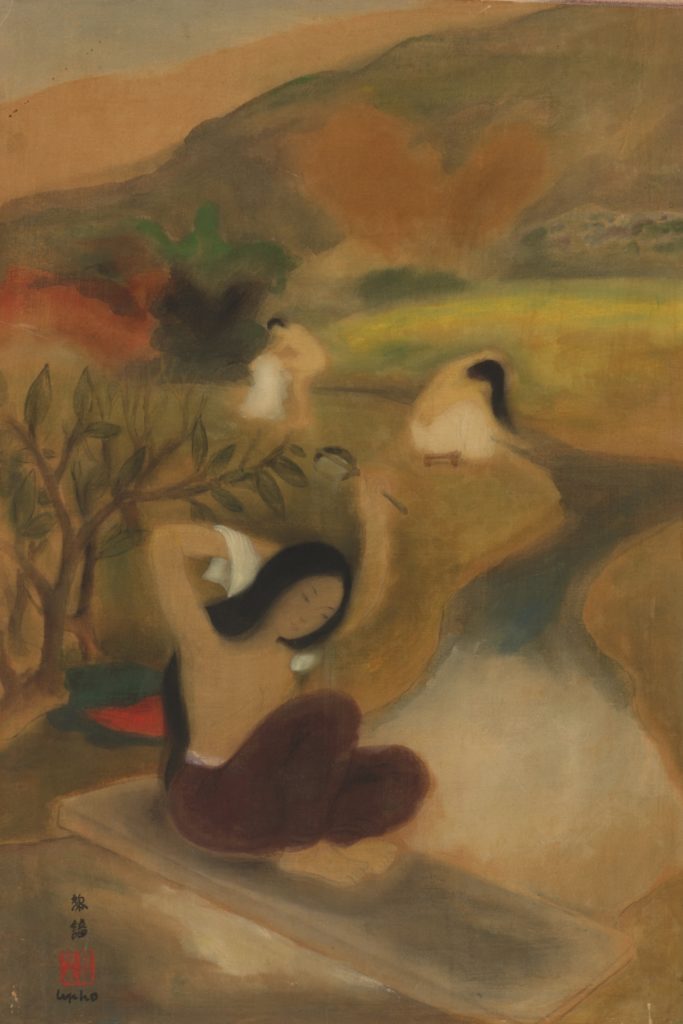Le Pho, « La Baignade », circa 1938, or rubbing shoulders with the Master Bonnard
Le Pho was, from very early on, an unwavering admirer of Bonnard and Matisse. So confident, in fact, that he saw his move to France in 1937 as a mental pilgrimage towards them. A visit to China in 1934 had confirmed to him that, while Chinese painting and the Taoist thought that underpins it deserved his respect, his own approach, instilled at the Beaux-Arts in Hanoi, drew him irrevocably to the West. Where, in particular, the works of his two elders, as well as those of the Renaissance, fascinated him.

“La Baignade”, a large (46 x 30.5 cm) gouache and ink on silk, may be dated around 38, or perhaps just after.
Unusual in the painter’s corpus, it embodies the notion of shifted observation that underpins all of Bonnard’s art: the observer must separate his observation if he is to grasp the reality of the painting. He has to capture the bewitching grace of the women, their sensuality within masses built with matte gouache tones; in a deliberate chromatic blur, mountains, rivers and bridges are arranged. The gradual use of ink – from the first woman’s pants to the third’s hair – amplifies the depth of the work.
The landscape is universal, neither specifically Asian nor uniquely Western. Only the facial features of the women, at least the first, evoke Asia.
This is the work of a deliberate confusion that authorizes the desired fusion.
A fiction that authorizes fission.
All Le Pho’s themes are expressed here, by a painter who, he senses, has already made the choice – which will prove to be definitive – of the West, all in a display of discretion underpinned by an assumed distancing.
One before, one after.
Le Pho also met Matisse in 1943, who advised him to lighten his palette.
Then came the Romanet and Findlay periods. The influence of Bonnard or Matisse would then have to be identified.
But that’s another story…
Jean-François Hubert